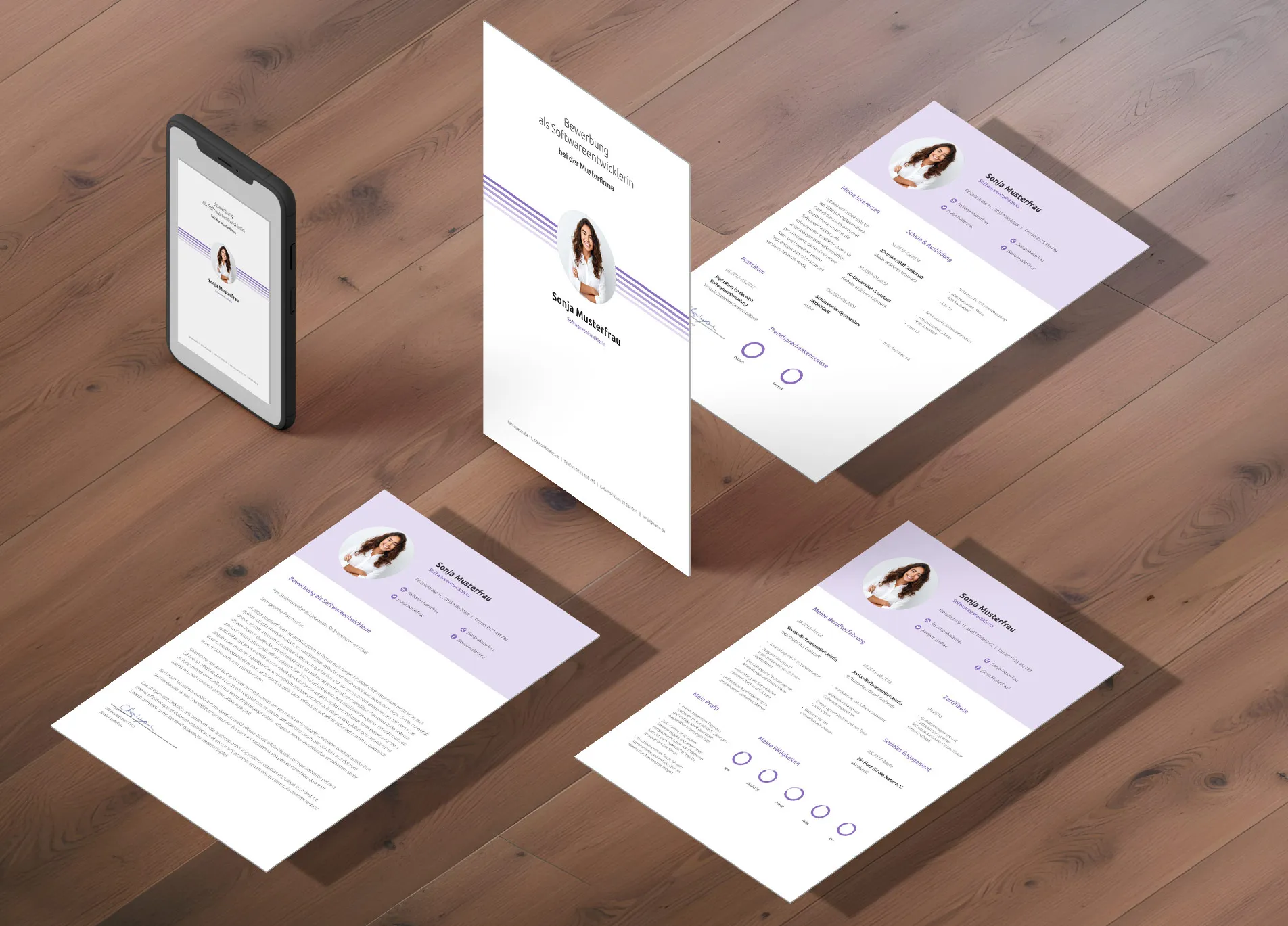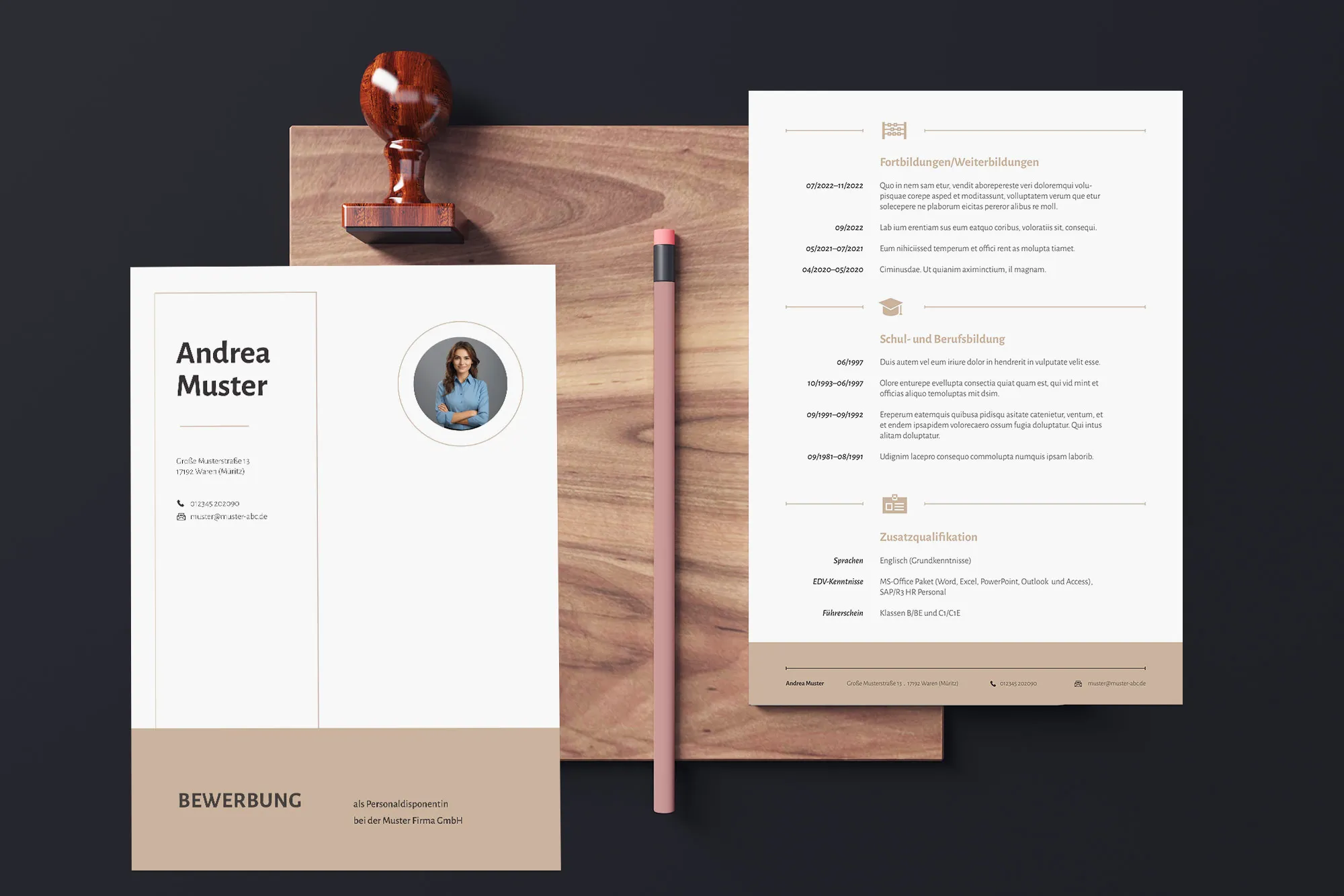Occupational therapist: template for an application with CV
Imagine helping people regain their mobility and quality of life - as an occupational therapist you have the chance to do just that. Are you looking for information for the perfect application as an occupational therapist and wondering how you can make your CV attractive and convincing? You'll find it here! From helpful tips for your application letter to samples and templates for your cover letter and CV - we offer you everything you need to apply successfully. Let us help you on your way to a fulfilling and successful career as an occupational therapist.
Cover letter for an application as an occupational therapist: use our samples and formulation aids
Let our sample cover letter for an occupational therapist application inspire you. This template offers you helpful formulations for your application letter in the field of occupational therapy. However, make sure you take the specific requirements of the job advertisement into account. Combine your previous skills and experience with the required skills and characteristics from the job description. It is important that the recruiter sees that you are both professionally qualified and genuinely interested in the vacancy. This way, you are more likely to be invited for an interview.
Dear [name of contact person],
As a dedicated and compassionate individual with a strong interest in promoting the quality of life of people of all ages, I am pleased to submit my application for an Occupational Therapist. During my professional career to date, I have gained extensive experience in individual therapy as well as group work and have repeatedly experienced the positive effects of my work on patients.
My studies in occupational therapy at [name of university] have prepared me excellently for creating and implementing individual therapy plans. I placed particular emphasis on motor-functional treatments and the promotion of my patients' cognitive abilities. My internships at [name of institution] and [name of institution] have given me additional practical insights and valuable experience in various areas of occupational therapy.
I am particularly interested in working at your facility as I appreciate your holistic and patient-centered approach. Your team is known for its innovative therapy concepts and its close cooperation with patients and their families, which corresponds to my own professional self-image.
I am available for a personal meeting at any time and look forward to getting to know you and your team.
Yours sincerely
[Your name]
Do you like the sample? You are welcome to use it as a template for your application as an occupational therapist and adapt it to your needs. Remember to include your personal information, the recipient's full address and update the date. If you know who you are addressing the application to, it is always an advantage to address them directly, for example with: Dear Ms. Müller.

Applying individually: how to adapt your cover letter to your skills and experience
Before you use the template for your cover letter as an occupational therapist, make sure you adapt it to your individual circumstances. Add personal information and specific skills that you bring to the table so that your cover letter not only looks professional, but also authentic. Standardized texts often come across as impersonal and can reduce your chances of being invited for an interview.
- Conducting therapy sessions: This involves you helping patients to improve their motor skills and everyday abilities.
- Creating individual therapy plans: You will create customized programs tailored to the specific needs of each client.
- Advising patients and relatives: You provide tips and instructions on how therapeutic measures can be integrated into everyday life.
- Documenting the course of therapy: You record progress and successes in order to monitor developments in the therapy process.
- Collaboration in an interdisciplinary team: You will work closely with doctors, nursing staff and other therapists to ensure that patients receive holistic care.
- Carrying out assessments: You will assess patients' abilities and limitations in order to develop suitable intervention strategies.
- Training and continuing education: You'll stay on top of the latest developments in your field to provide the best possible therapy.
By personalizing your cover letter and highlighting relevant activities that are important in your profession as an occupational therapist, you can best showcase your skills and commitment. An attractively worded cover letter significantly increases your chances of being invited to an interview.

Where are your knowledge and skills as an occupational therapist particularly valued?
As an occupational therapist, you have the opportunity to work in a very diverse and exciting professional field. Depending on your interests and specializations, you can work in various sectors and help people of all ages to improve their quality of life.
- Healthcare: You will work in hospitals, rehabilitation centers or doctors' surgeries to help patients recover after illness or injury.
- Elderly care: In retirement homes or day care facilities, you will help senior citizens to maintain their independence and promote everyday skills.
- Pediatrics: In children's clinics or kindergartens, you will help children with developmental disorders or disabilities to improve their motor and cognitive skills.
- Psychiatry: In psychiatric facilities or therapy practices, you will work with people suffering from mental illnesses and help them to cope better with their everyday lives.
- Schools and education: You look after pupils with learning or behavioral difficulties and support them in developing their academic and social skills.
- Occupational therapy: Here you help people reintegrate into the job market, for example in workshops for the disabled or through vocational rehabilitation measures.
- Independent practice: As an independent occupational therapist, you can work in your own practice and treat patients who come to you on a referral or private basis.
As you can see, the career opportunities as an occupational therapist are very diverse. Depending on which target groups and working environments interest you the most, you are sure to find an industry that suits you and in which you can make a valuable contribution to the health and quality of life of others.

Create a CV that rounds off your application perfectly
A well-structured and carefully crafted CV is crucial when applying for the position of occupational therapist. It gives your future employer an initial insight into your skills and experience and shows that you have the necessary qualifications and enthusiasm for the profession.
- Personal details: Complete contact information such as name, address, phone number and email are essential. This will enable your potential employer to contact you quickly.
- Work experience: List relevant work experience and internships. Be sure to include detailed information about your roles and responsibilities, especially those that highlight your hands-on experience in occupational therapy.
- Education and qualifications: Include your educational background, including your training as an occupational therapist. Also mention any additional relevant training or certificates that support your professional aptitude.
- Professional competencies: Highlight specific skills that are relevant to occupational therapy, such as knowledge of treating specific patient populations or experience with specific forms of therapy.
- Personal skills: Qualities such as empathy, communication skills and the ability to work in a team are essential in occupational therapy. Describe specific situations in which you have successfully used these skills.
A compelling occupational therapist CV combines a clear structure with detailed information about your education, work experience and skills. By highlighting your professional and personal skills, you can convince a potential employer that you are well prepared for the challenges of this profession.
Now it's time to shape your application as an occupational therapist! Simply use our application templates, which you can edit in Word and other programs:
